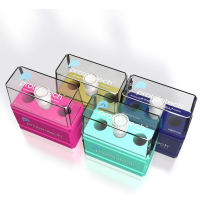Dendritic cells (DC) are a family of bone-marrow-derived professional antigen presenting cells (APC) with sparse, but wide, tissue distribution (1 ). They are classified primarily based on their localization: as interdigitating reticulum cells when present in lymphoid organs, as veiled cells when present in afferent lymph, as Langerhans cells when present in the epidermis, and as dermal dendritic cells when found in the dermis. Although DC are widely dispersed throughout the body, they exhibit many common features: an irregular shape with elongated dendritic processes, a distinctive cell-surface phenotype, low buoyant density, active motility, and the ability to stimulate vigorous proliferation of unprimed T cells. Like other professional APC such as macrophages and B cells, DC are able to ingest, process, and present antigen (Ag) in the context of major histocompatability (MHC) molecules. However, owing to their high expression of MHC class I and II, as well as costimulatory molecules and adhesion molecules, DC have the ability to induce primary T-cell-dependent immune responses in vivo and in vitro. This unique feature gives dendritic cells a central role in controlling immunity.






